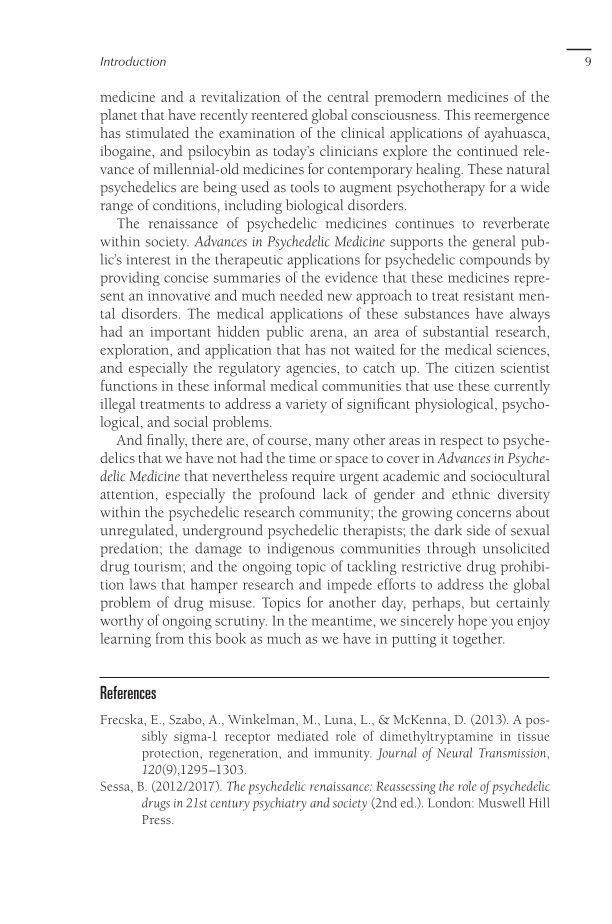Introduction 9 medicine and a revitalization of the central premodern medicines of the planet that have recently reentered global consciousness. This reemergence has stimulated the examination of the clinical applications of ayahuasca, ibogaine, and psilocybin as today’s clinicians explore the continued rele- vance of millennial-old medicines for contemporary healing. These natural psychedelics are being used as tools to augment psychotherapy for a wide range of conditions, including biological disorders. The renaissance of psychedelic medicines continues to reverberate within society. Advances in Psychedelic Medicine supports the general pub- lic’s interest in the therapeutic applications for psychedelic compounds by providing concise summaries of the evidence that these medicines repre- sent an innovative and much needed new approach to treat resistant men- tal disorders. The medical applications of these substances have always had an important hidden public arena, an area of substantial research, exploration, and application that has not waited for the medical sciences, and especially the regulatory agencies, to catch up. The citizen scientist functions in these informal medical communities that use these currently illegal treatments to address a variety of significant physiological, psycho- logical, and social problems. And finally, there are, of course, many other areas in respect to psyche- delics that we have not had the time or space to cover in Advances in Psyche- delic Medicine that nevertheless require urgent academic and sociocultural attention, especially the profound lack of gender and ethnic diversity within the psychedelic research community the growing concerns about unregulated, underground psychedelic therapists the dark side of sexual predation the damage to indigenous communities through unsolicited drug tourism and the ongoing topic of tackling restrictive drug prohibi- tion laws that hamper research and impede efforts to address the global problem of drug misuse. Topics for another day, perhaps, but certainly worthy of ongoing scrutiny. In the meantime, we sincerely hope you enjoy learning from this book as much as we have in putting it together. References Frecska, E., Szabo, A., Winkelman, M., Luna, L., & McKenna, D. (2013). A pos- sibly sigma-1 receptor mediated role of dimethyltryptamine in tissue protection, regeneration, and immunity. Journal of Neural Transmission, 120(9),1295–1303. Sessa, B. (2012/2017). The psychedelic renaissance: Reassessing the role of psychedelic drugs in 21st century psychiatry and society (2nd ed.). London: Muswell Hill Press.
Document Details My Account Print multiple pages
Print
You have printed 0 times in the last 24 hours.
Your print count will reset on at .
You may print 0 more time(s) before then.
You may print a maximum of 0 pages at a time.













































































































































































































































































































































































































